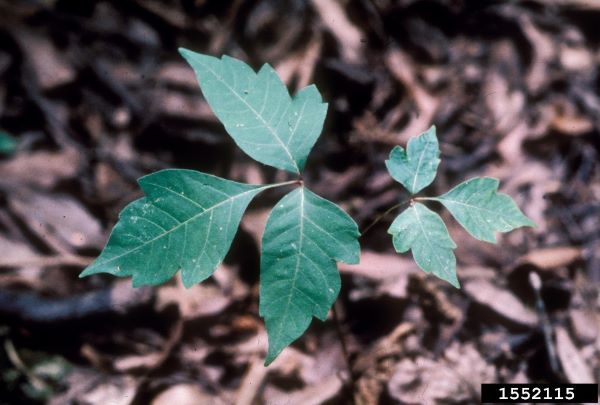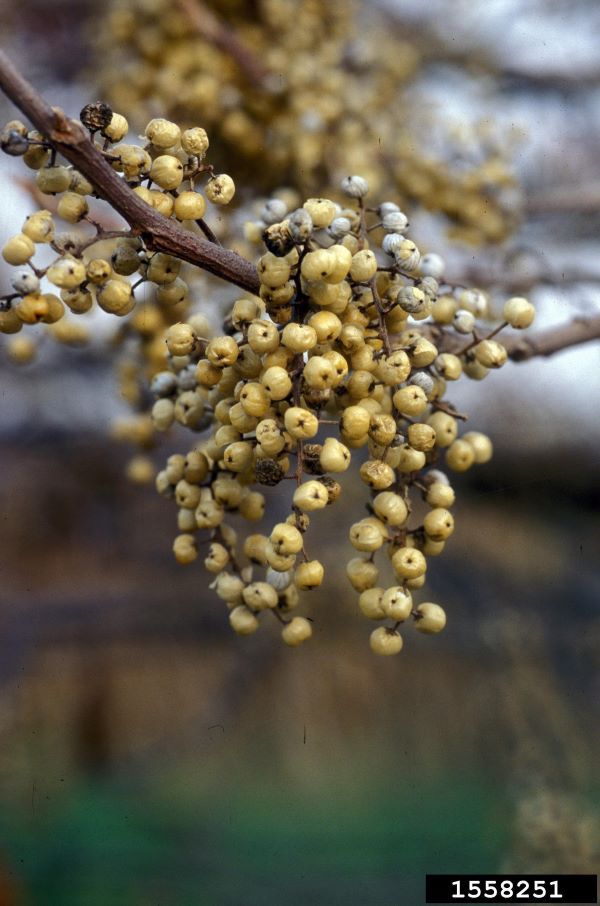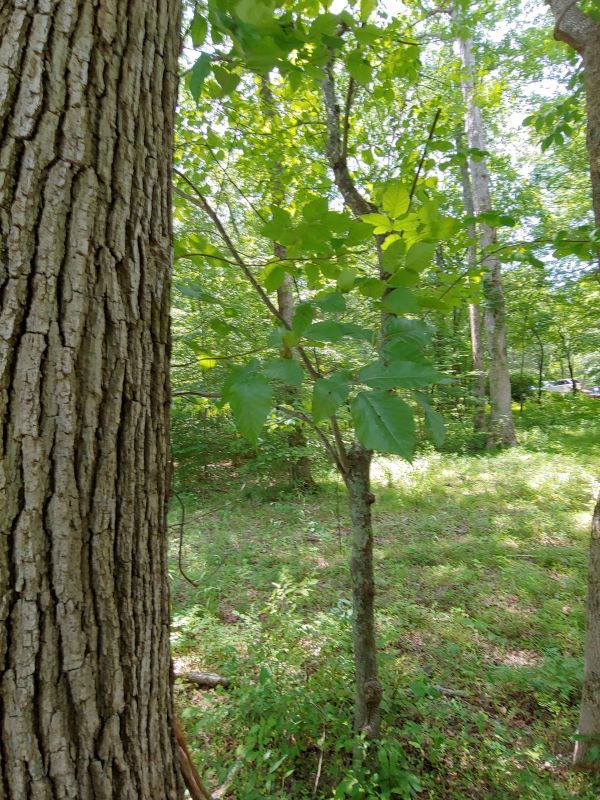Issue 12, September 22, 2021
Poison Ivy
As a parent, a gardener, and a weed scientist, I try my best to teach my kids about certain weeds – when they will listen. One species that I always point out to them when we come across it while hiking is poison ivy. As a good mom should, I then tend to overreact a bit if a young, bare leg accidentally touches it. They know the phrase, “Leaves of three, let it be,” and my kids are good at questioning plants that look like poison ivy. What I apparently hadn’t explained well enough to my son was about the oil and how easily it can spread.
He’s a helper. While on a mission trip this summer, he was tasked with various gardening duties. Guess what he came home with? His very first poison ivy rash! When I asked if he knew what it was, he replied with a strong, “Oh yes! I told the other kids that it was poison ivy and it HAD to go! So we pulled it out by hand. We had gloves on.” The poor boy worked for hours in a T-shirt and cloth gloves with no soap or water. Bless his heart. He now knows not to be so eager of a volunteer when it comes to poison ivy! I didn’t have the heart to tell him that poison ivy is persistent and would likely grow back if the top growth was simply removed.

Poison ivy. Ohio State Weed Lab, The Ohio State University, Bugwood.org.
How do you remove something you shouldn't touch? The short answer is very carefully; I'll cover the long answer in a moment. In his case, he should have consulted with a knowledgeable adult so proper precautions could be taken by someone with more experience, but hindsight is 20/20.
This weed can be tricky to control, but also tricky to identify. Poison ivy (Toxicodendron radicans) is a perennial that can grow as a woody vine or shrub. The leaves are compound and grow alternately up the stem. What is certain is that the leaves are compound--made up of three large, palmately borne leaflets. What is not always certain is the appearance of the leaflets. Two plants may look very different. Leaf margins may be smooth or serrate, the leaf surface may be glossy or dull, leaves may be lobed or unlobed, and color may be almost any shade of green. A typical shape is that of a mitten, but leaf shape may vary.
Be aware there are other plants, such as box elder, that also have "leaves of three". Many also mistake other vines such as Virginia creeper and trumpet creeper for poison ivy. However, when unsure, it's certainly safest to avoid touching (with bare skin especially) any poison ivy look-alike.
Similar species and variations of leaves can create much confusion. But once all those variable leaves have dropped in the autumn, one of the best ways to quickly identify a woody vine as being poison ivy is to look for the presence of numerous aerial roots on the vine. These are reddish brown and give the vine a fuzzy appearance. You may also see the fruit, which are produced in late summer, but can persist throughout the winter.

Poison ivy fruit. Ohio State Weed Lab, The Ohio State University, Bugwood.org.
White flowers appear usually in May and June; and small, round, greenish to grayish white, berrylike drupes soon follow. Birds feast on this fruit and readily disperse the seed. Furthermore, poison ivy also reproduces by creeping root stocks and by stems that root where they contact the soil. Consequently, this plant is found in many parks, landscapes, woodlands, and wetlands. It thrives under a variety of conditions.
In Illinois, leaves turn a gorgeous red in the fall. In fact, this plant has been imported into a few countries for this reason. Personally, I don't think it's that pretty, considering the itching part. Year-round, all parts of the plant except the pollen contain a resinous compound, or "oil," that causes itching and blistering on the skin of most people. Animals are less sensitive to this oil, but if you are sensitive to it and pet your dog or cat that has been rolling around in it, watch out! If you are washing clothes contaminated with poison ivy, be aware the oil may still be present and give you a rash. Don't worry about touching someone else's or your own rash because the oil is the only cause of the irritation. You can't get a poison ivy rash from someone who already has the rash. Also, smoke from burning poison ivy plants can cause irritation in some people as the oil vaporizes in the heat and is moved by the smoke.
Poison ivy is difficult to kill, and you may need to be persistent with your control efforts. Plants may be physically removed, including the roots. However, resprouting is likely to occur if any underground parts are missed. Also, this may be too close for comfort for those who are allergic to poison ivy. Be sure to cover bare skin. Use disposable gloves when possible. Alternatively, you can hire a professional to control it.

Poison ivy growing as a small tree; note the difference in leaf shape. Michelle Wiesbrook. University of Illinois.
Another method that involves a little less contact with the plant is to cut off the plant at its base and treat the stump with a herbicide such as triclopyr (Ortho Brush-B-Gon, Garlon, etc.). It's helpful to flag the area so you can easily check periodically for regrowth. If regrowth occurs, make a second herbicide application. Be sure to follow product label directions exactly. Before purchasing, verify that poison ivy is listed specifically and that the product can be legally used in the site it is growing in.
Waiting until the foliage dies down before removing it could decrease your risk of getting a rash. But keep in mind, the oil is still found on the plant a long time after it dies. If you can't find the base of the plant or can't get to it easily, foliar applications can be made with products labeled for this use that contain the active ingredients mentioned or dicamba (Banvel, etc.). However, if poison ivy is covering other plants, those plants are likely to be injured or killed by the herbicide. It may be tempting to spray a vine that is covering a tree’s trunk. A more precise application directly to the stump or perhaps “painting” the leaves would help prevent off-target damage.
Imazapyr can be effective on poison ivy but movement to nontarget plants can be a concern due to possible root grafting. Another consideration with certain herbicides is soil mobility, especially if roots of desirable plants are nearby. In this situation, glyphosate (Roundup, etc.) would be a better choice. Control can still be achieved, but soil mobility is not an issue because glyphosate is tightly bound to soil. With any product, complete control may not be achieved for a few years, and multiple applications may be necessary. Remember to always read and follow the product label.
Author:
Michelle Wiesbrook